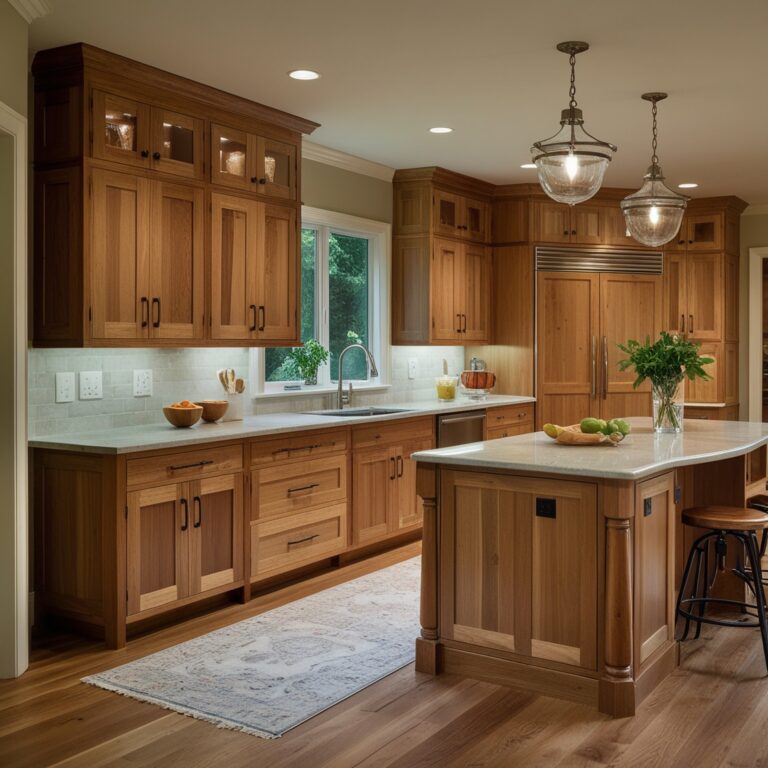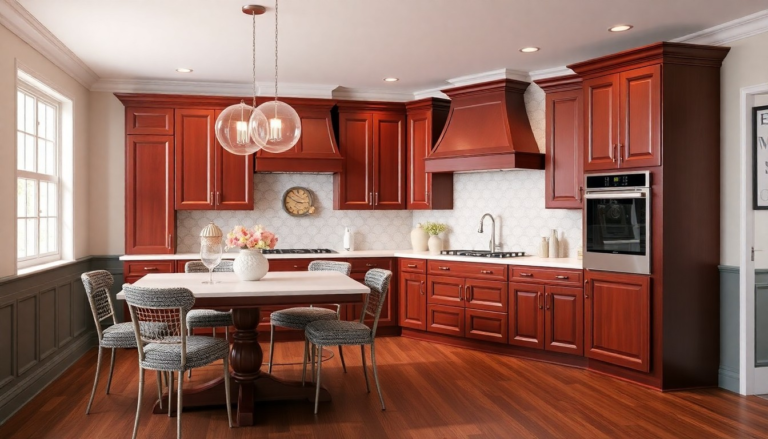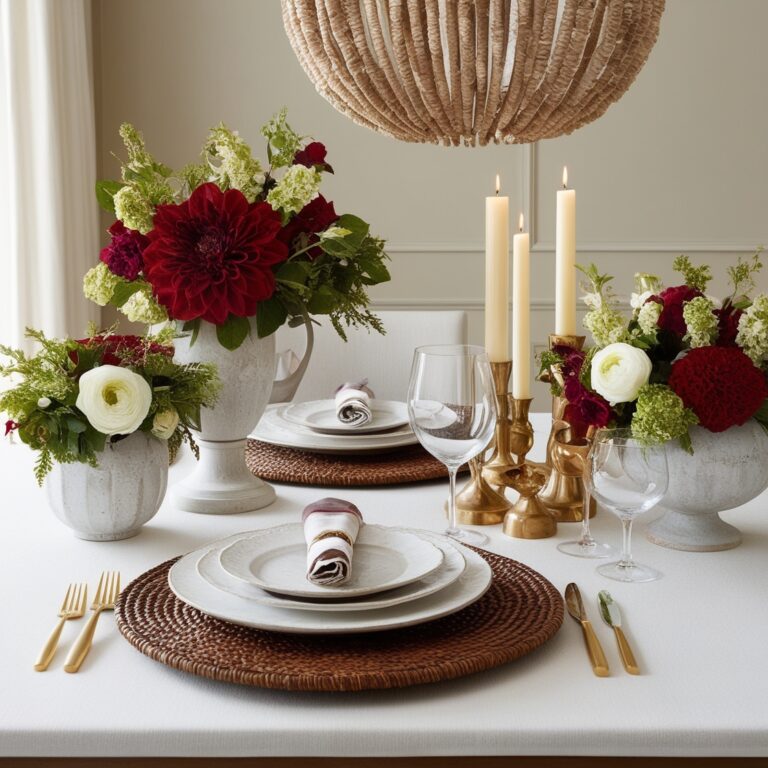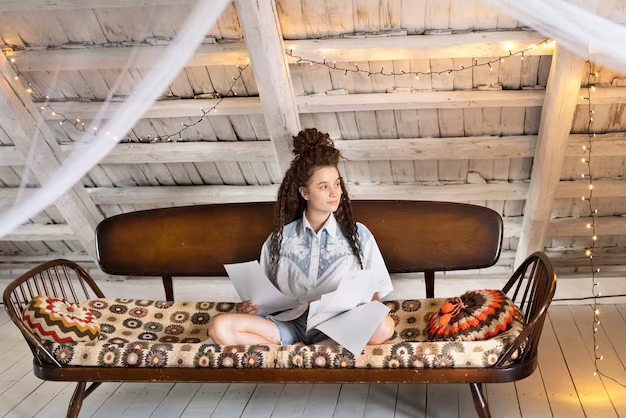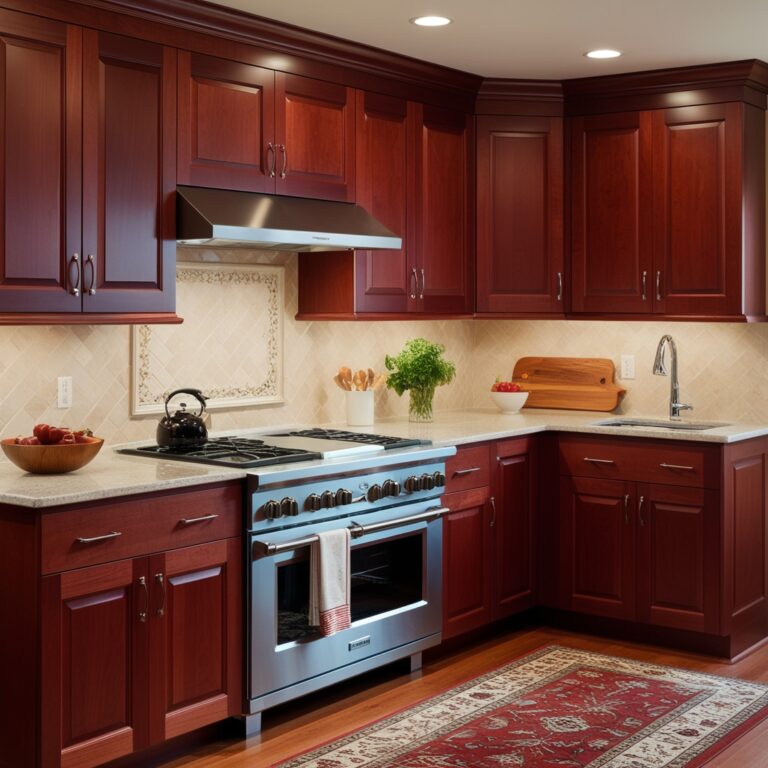20 Dark Hallway Decorating Tips: How to Brighten Up Your Hallway

Dark hallways can feel like the forgotten alleyways of your home—narrow, dim, and often overlooked.
But with the right design strategies, you can transform that gloomy passage into a light-filled, welcoming space.
Whether your hallway lacks natural light, suffers from poor layout, or just needs a style refresh, this guide will walk you through 20 practical, impactful tips to brighten it up.
1. Use Light Paint Colors Strategically
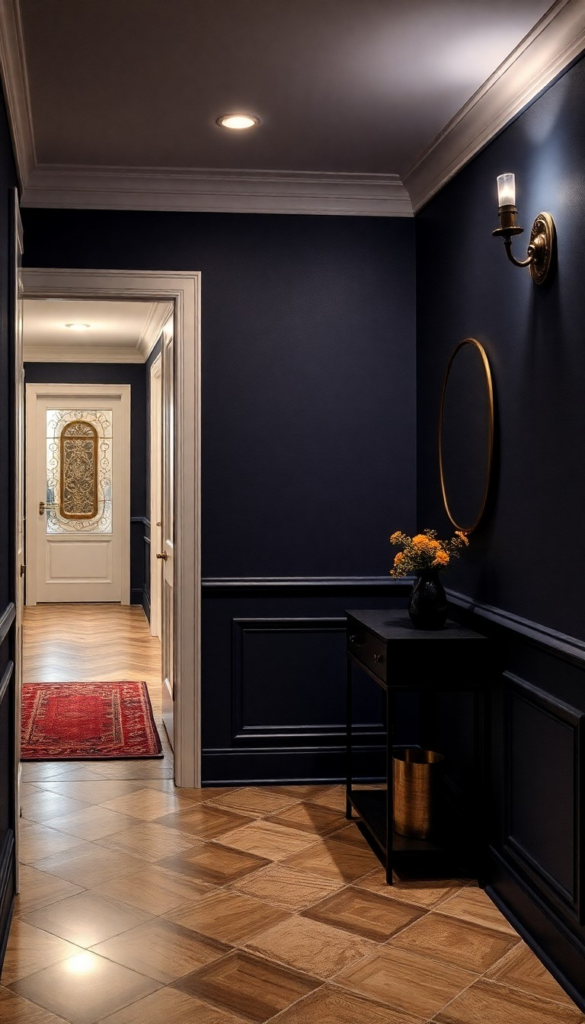
Painting your hallway walls a light, reflective color is the simplest and most effective way to banish darkness.
White, cream, soft gray, or pale pastels reflect more light, instantly opening up the space.
Avoid darker shades which absorb light and make the hallway feel narrower.
Think of it like giving your hallway a facial—bright, clear, and instantly more alive.
I once painted a narrow entryway in a shade called “Whispering Cloud.”
After the second coat, the difference was like flipping on the sun.
2. Add Mirrors to Reflect Light
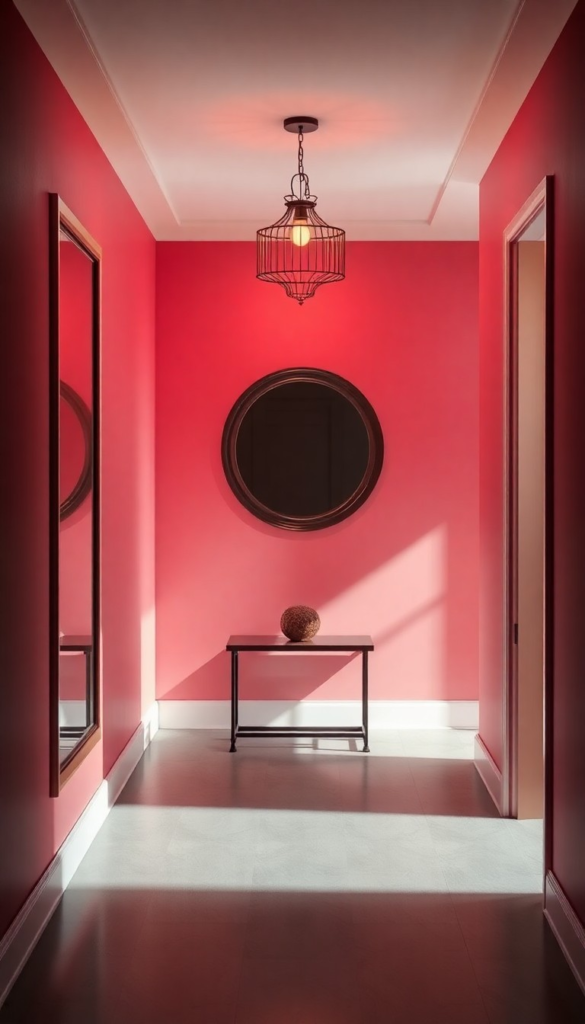
Mirrors are your best friend in a dark hallway.
Hang one large mirror or create a gallery wall of smaller mirrors to bounce light around and create the illusion of depth.
Place them across from a light source—like a lamp or window—to amplify the effect.
According to a 2023 Houzz study, homes with mirror-enhanced entryways increased perceived space by up to 30%. That’s a big visual return for minimal effort.
3. Incorporate Wall Sconces for Even Lighting
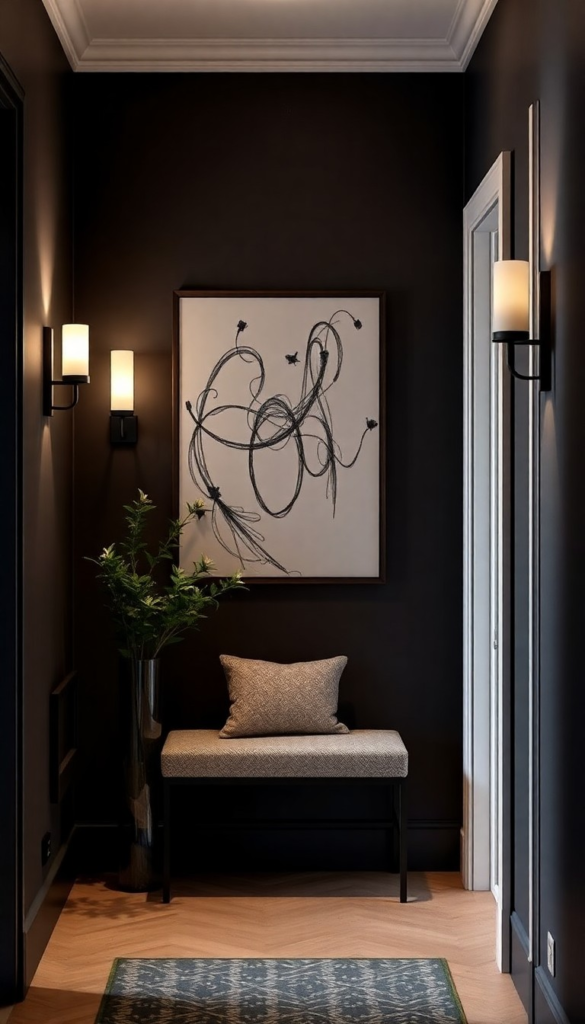
Overhead lighting isn’t always enough—especially in long hallways where the light doesn’t reach evenly.
Wall sconces spread light along the length of the hallway and reduce shadows that make the space feel cramped.
Pick fixtures with a soft white or warm LED bulb for a cozy glow that doesn’t overpower.
Go for symmetry—one on each side, or every few feet, depending on your hallway’s length.
4. Choose Gloss or Satin Paint Finishes
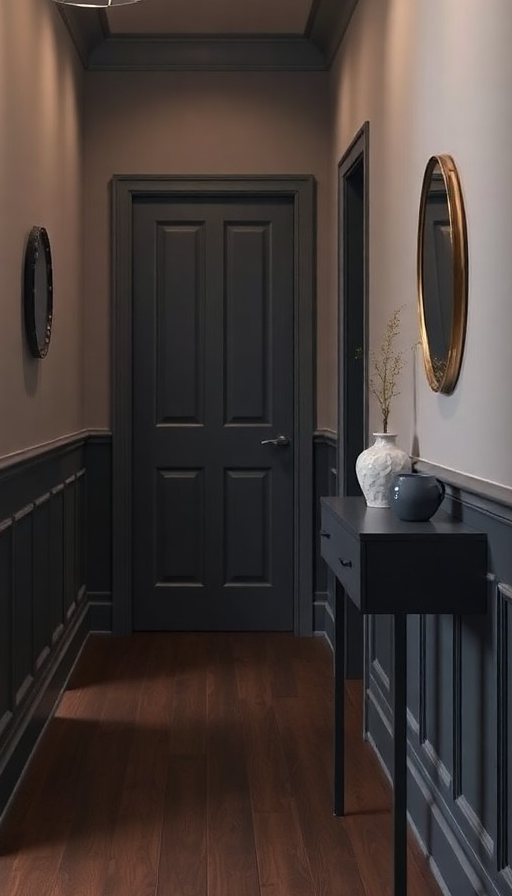
A secret pro tip: gloss or satin finishes reflect more light than matte. Use them on walls, trim, or even the ceiling to increase light bounce.
This doesn’t mean your hallway has to shine like a disco ball—just enough gleam to subtly enhance brightness.
It’s a trick I used in my own hallway, opting for a satin finish in a pale gray.
I didn’t realize how effective it was until guests started complimenting the “lighting” when all I’d done was change paint finish.
5. Install a Skylight or Solar Tube
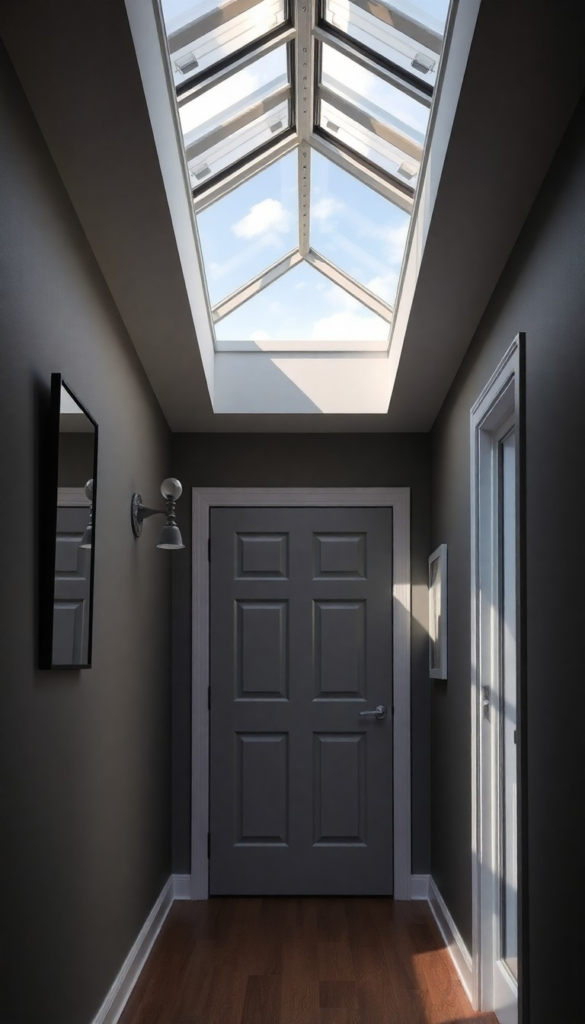
If you’re dealing with a hallway with no windows, consider structural lighting like a skylight or solar tube.
A solar tube captures sunlight from your roof and funnels it through a reflective tunnel into your hallway.
According to the U.S. Department of Energy, solar tubes can reduce your need for artificial lighting by 30-40%, making them both eco-friendly and effective.
6. Opt for Lighter Flooring or Rugs
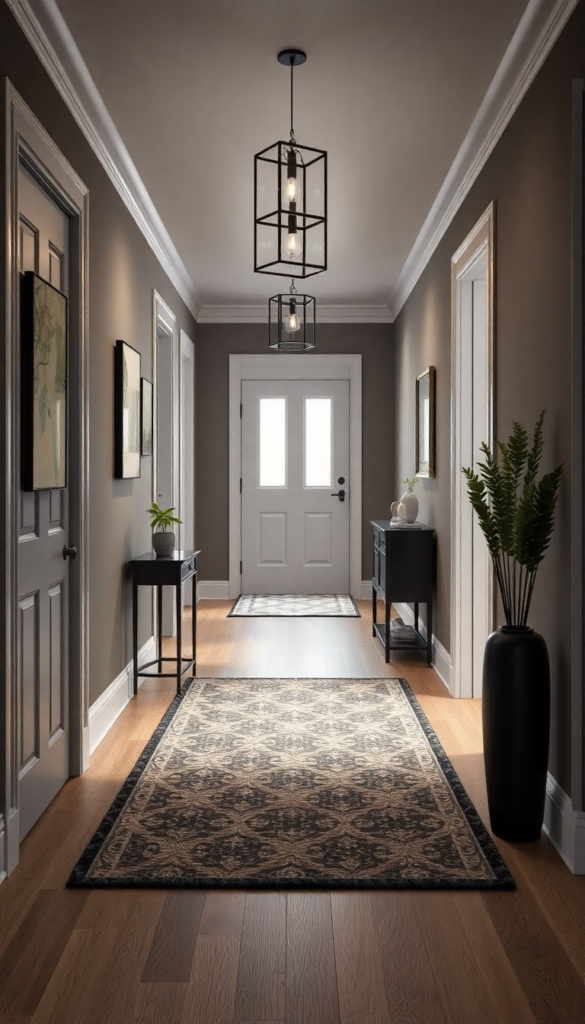
Dark wood or tile flooring can pull a hallway down into the shadows.
If replacing flooring isn’t in the budget, a light-colored runner or rug can make a world of difference.
Think ivory, oatmeal, light gray, or soft beige.
This trick creates a visual path of brightness, drawing your eye down the hall and making it feel longer and more open.
7. Layer Your Lighting Sources
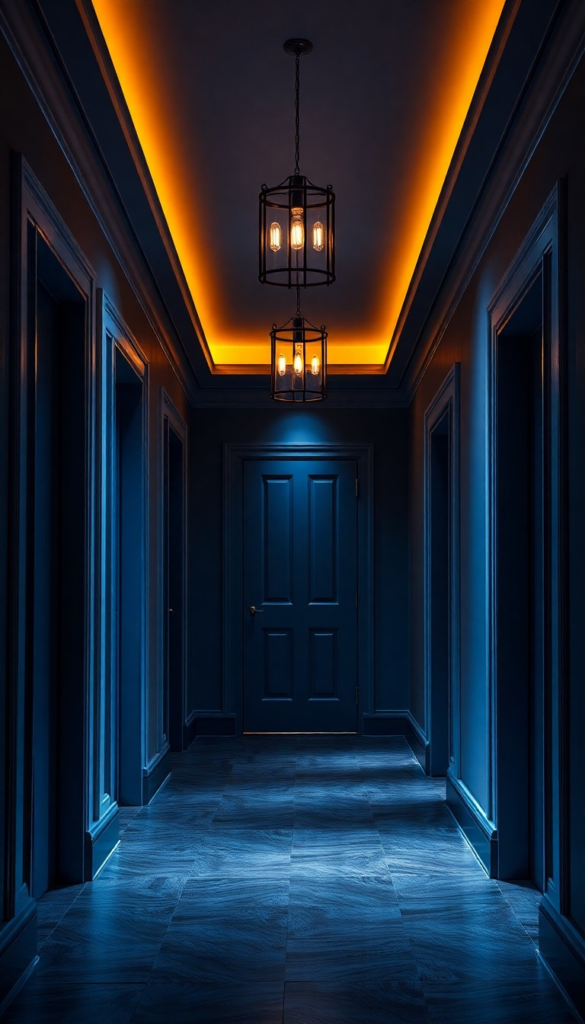
One overhead bulb won’t cut it. Combine different lighting elements to create an inviting ambiance.
Use recessed lighting, sconces, table lamps on a console, or even string lights to bring your hallway to life.
According to the Illuminating Engineering Society, layered lighting improves perceived comfort and brightness by balancing visual focus across a space.
8. Use Glass or Lucite Furniture
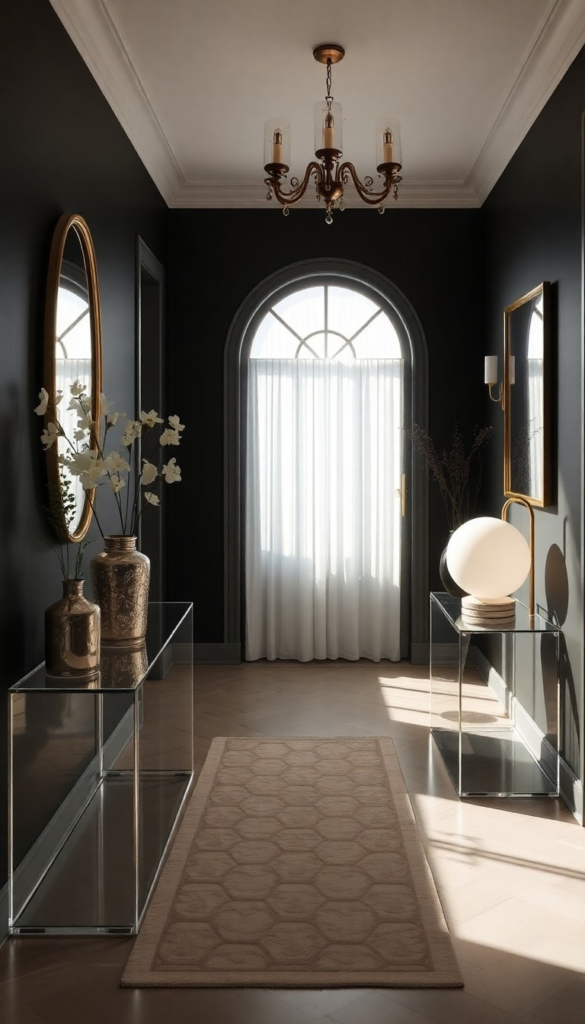
Hallways with console tables or decorative benches should avoid bulky, opaque materials.
Choose glass, acrylic, or open-framed furniture that doesn’t block light flow.
These materials almost disappear visually, helping the space feel open.
Imagine your hallway furniture as a background dancer—not stealing the spotlight but enhancing the performance.
9. Paint the Ceiling a Lighter Shade
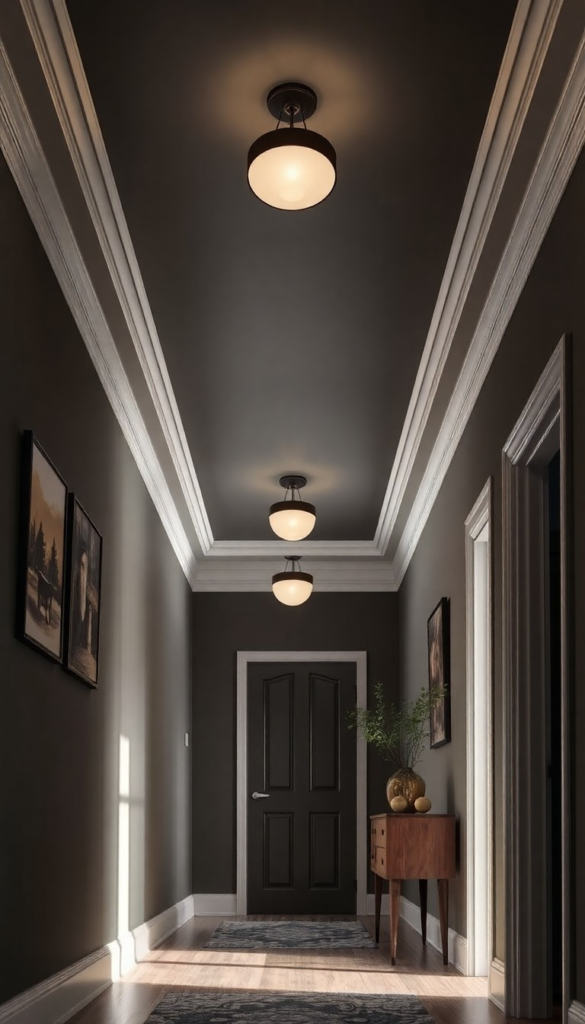
People often forget the fifth wall—the ceiling.
Painting it a brighter shade than your walls or even using high-gloss white can reflect more light downward, brightening the space from above.
Bonus: A lighter ceiling also gives the illusion of height, making your hallway feel less like a tunnel and more like a gallery.
10. Hang Art with Light Tones or Metallic Accents
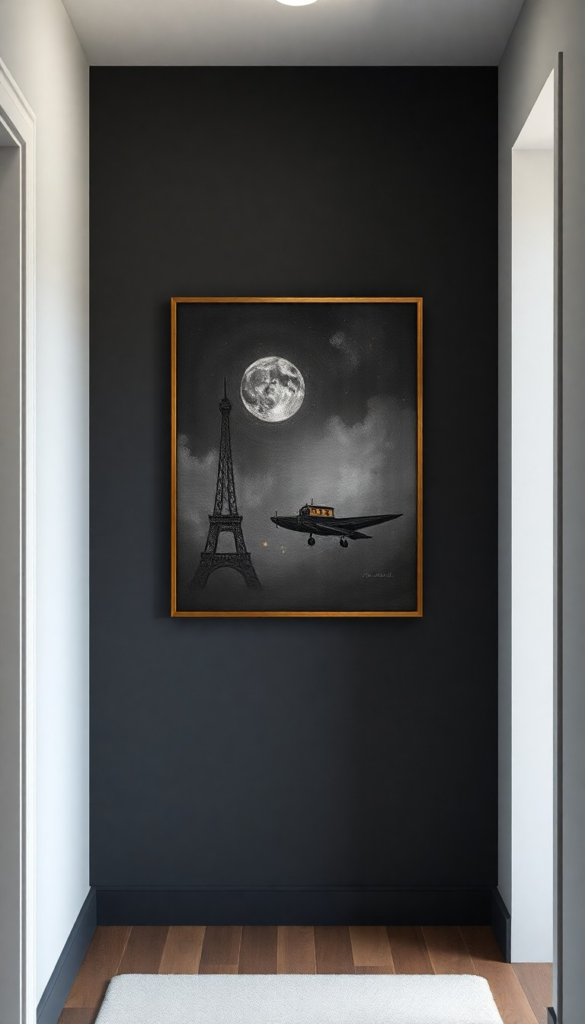
Artwork in a dark hallway should lighten the mood, not deepen it.
Choose pieces with bright backgrounds, reflective frames, or metallic accents that catch the light and enhance the hallway’s atmosphere.
A gold-framed landscape painting in my hallway does more for the space than any artificial light I’ve installed—it literally glows when the morning light hits it.
11. Choose Clear or Light-Colored Doors
If your hallway has multiple doorways, swapping dark wood doors for white or light-colored ones (or painting them) will help reflect more light.
Consider frosted glass doors if privacy isn’t an issue—they let in light while maintaining separation.
This swap might seem subtle, but it dramatically shifts the light balance in a hallway lined with doors.
12. Keep the Space Uncluttered
Visual clutter absorbs light. A hallway stuffed with coats, shoes, or baskets not only looks chaotic but also blocks light flow.
Use minimalist storage solutions like slim cabinets, wall-mounted hooks, or under-bench drawers to stay organized without sacrificing space.
Designers estimate that reducing visual clutter in small spaces can increase light perception by up to 25%.
13. Try Light-Reflecting Wallpaper
Wallpaper doesn’t have to darken a space. Choose light-reflective wallpaper with metallic prints, glossy finishes, or bright patterns.
They bounce light and add visual texture without weighing down the walls.
Think of it as your hallway’s personality jacket—eye-catching, reflective, and totally transformative.
14. Use LED Strip Lighting Under Trim or Along the Floor
Install LED strip lighting under crown molding or along the baseboards to create a subtle glow.
It’s like giving your hallway a halo, creating a soft, diffused light that runs the length of the space.
LEDs are also energy-efficient. According to Energy Star, they use up to 90% less energy than traditional bulbs.
15. Replace Solid Doors With French Doors (When Possible)
If your hallway leads to rooms with windows, replace solid doors with glass-paneled French doors.
The result? Light from those rooms floods into your hallway, giving it a brighter, more connected feel.
It’s a trick you’ll notice in boutique hotels or renovated farmhouses—and one that delivers big results if your floor plan allows.
16. Hang a Statement Light Fixture
A chandelier or bold pendant light in a narrow hallway makes a powerful impression.
Choose something with multiple bulbs or reflective surfaces that spread light in every direction.
When I installed a vintage crystal pendant in my hallway, it became a conversation piece and light source in one. It’s like jewelry for your ceiling.
17. Paint Trim and Molding in a Contrasting White
Even if your walls are a soft color, bright white trim and molding add crisp definition and boost perceived brightness.
The contrast draws the eye and makes the space feel intentionally styled rather than just… there.
Designers often use Benjamin Moore’s “Chantilly Lace” or “Simply White” for trim—it’s clean, reflective, and complements almost any wall color.
18. Install Motion Sensor Lighting
Dark hallways benefit from motion sensor lights that turn on as you move through the space.
They’re especially useful at night and can be tucked under stairs, along baseboards, or in recessed spots.
Plus, they’re energy efficient and a little magical—your hallway lights up like a red carpet entrance just for you.
19. Open Up the Ends of the Hallway
If your hallway leads to a door or wall, use a mirror, window, or glass panel to open it up.
If renovation is on the table, consider creating a cutout or glass inset to let light through.
Even a strategically placed artwork with a horizon or “view” can create the illusion of space beyond the end of the hallway, tricking the eye and brightening the feel.
20. Don’t Be Afraid to Go Bold—with Bright Accessories
Sometimes, it’s not about changing the architecture but playing up what you have.
Use vibrant rugs, colorful artwork, light-reflective frames, or ceramic decor to add pops of brightness.
Add items that feel like sunshine in object form—yellow vases, white planters, or a bright bench cushion can all bring a touch of joy and light.
Final Word: Your hallway may be narrow, dim, and windowless—but it doesn’t have to feel like a forgotten dungeon.
These 20 dark hallway decorating tips are your flashlight and compass.
Implement even a few, and your hallway can become a welcoming transition rather than a space to rush through.
Whether it’s layering light, using reflective materials, or simply painting the walls, every small change adds up.
The hallway deserves love too—after all, it’s the pathway to everywhere else.

